Did you know there are approximately 3,000 African tribes and about 2,000 languages and dialects on the continent?
Some ethnic groups are larger than others.
Some are more famous than others because of their culture, rituals, and traditions.
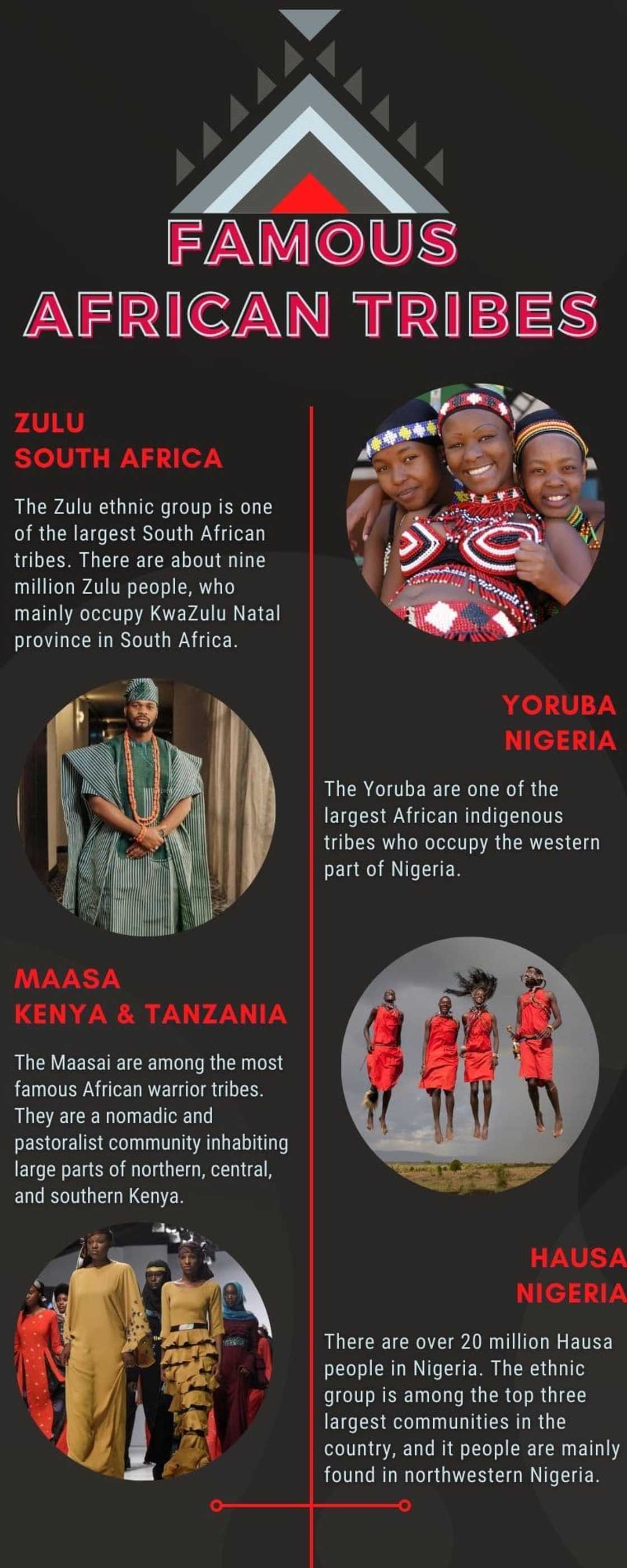
Photo: canva.com (modified by author)Source: UGC
Most African tribes have unique aspects of their culture and traditions.
Some ethnic groups are fading away due to westernisation.
Some communities are making efforts to ensure their traditions do not die.
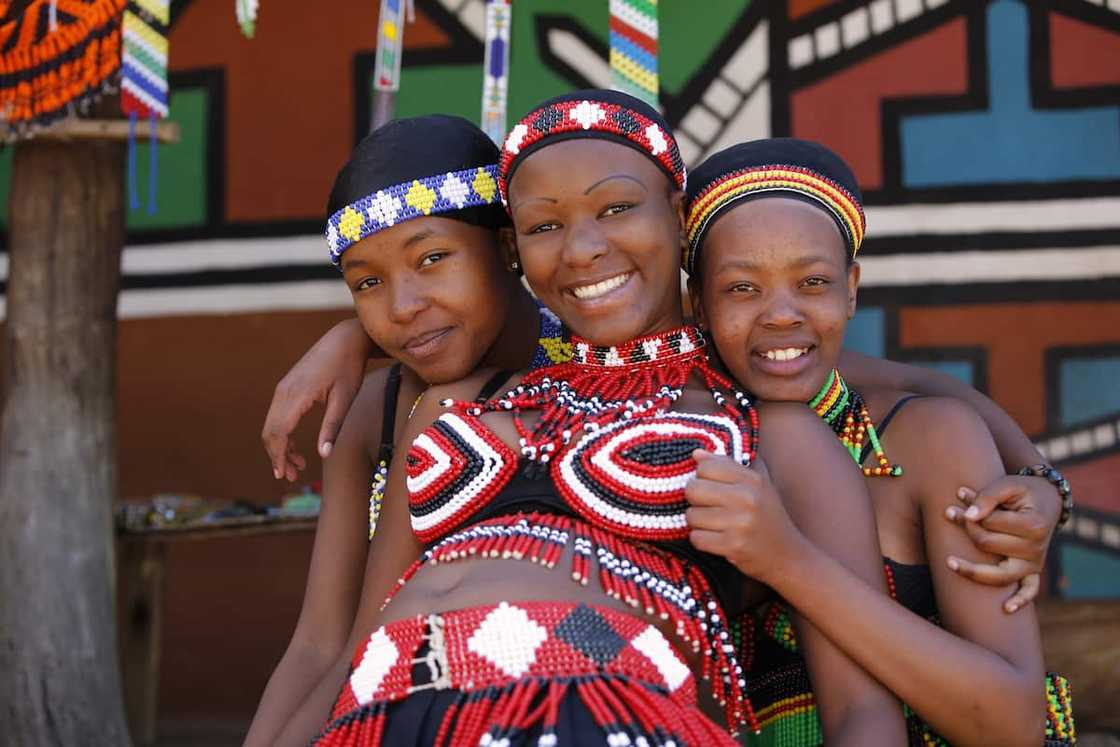
Three young Zulu women dressed in traditional beaded Zulu garments smiling for the camera. Photo: @Getty ImagesSource: Getty Images
Zulu - South Africa
TheZulu ethnic groupis one of the largest South African tribes.
There are about nine millionZulu people, who mainly occupy KwaZulu Natal province in South Africa.
The community’s most famous leader was Shaka, who reigned between 1816 and 1828.
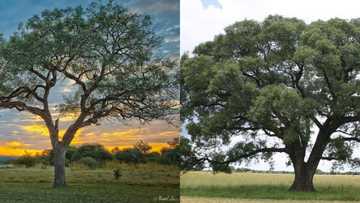
Read also
The traditional language in this community is called isiZulu.
This language is distinct because it involves a lot of clicking.
People believe in spirits calledabaphansioramadlozi, who are appeased for good health and fortune.

A Yoruba man and woman in elaborate traditional outfits. Photo: @omastylebridetw, @adorablejewelpalace (modified by author)Source: UGC
The mandatory marriage steps arelobolaor dowry payment,izibizoor gift-giving, andumaboor traditional wedding.
The traditional attire in this community is bright and colourful.
Men, women, and children accessorise with plenty of beads.

Read also
CommonZulu traditional foodsincludeamazi, uphuthu, amadumbe, ujeqe,andumqombothi.
Yoruba - Nigeria
TheYoruba areone of the largest African indigenous tribes who occupy the western part of Nigeria.
It is believed that the community descended from a supreme being called Odua or Oduduwa.
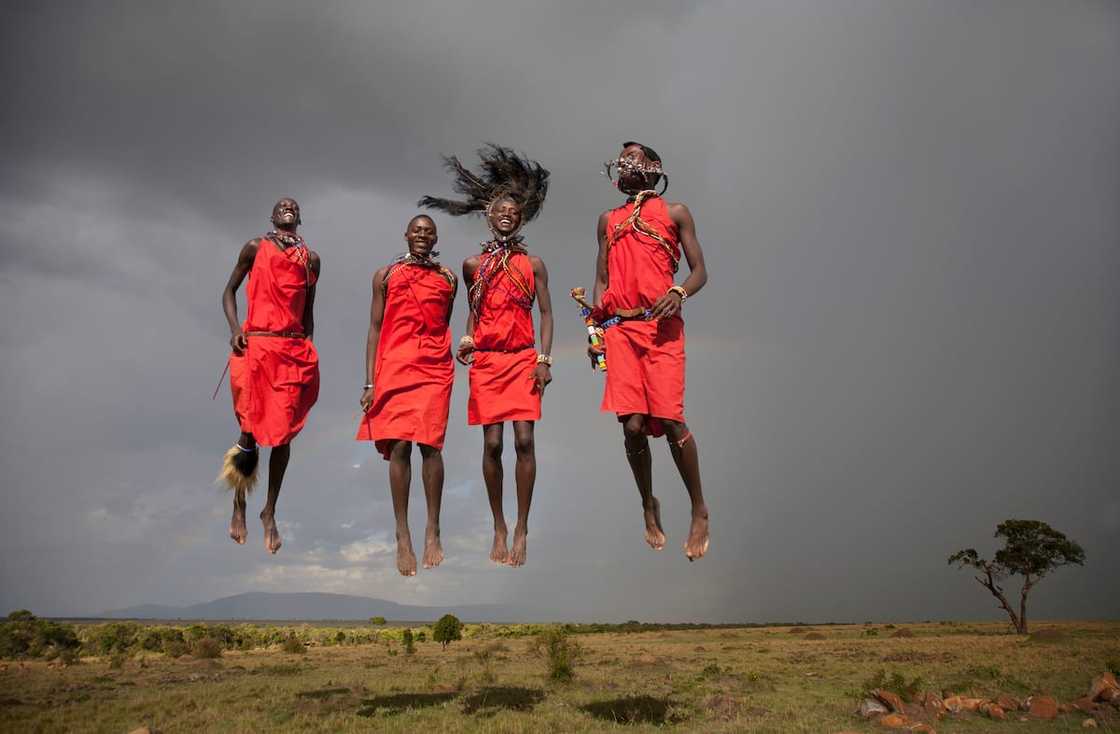
A group of four Maasai men jumping. Photo: @Getty ImagesSource: Getty Images
Yoruba has multiple dialects, but its speakers can all understand each other.
In this community, local festivals are dedicated to specific deities.
After birth, no one is allowed to speak until the baby cries.

Read also
The placenta is buried in the backyard.
Male and female circumcisions are performed in the first month of birth, and marriages are arranged.
Elon Musk briefly loses top spot on Forbes billionaire list
The traditional Yoruba attire is colourful and elaborate.

Models wearing Hausa-inspired outfits by House of Kaya at the 2017 Lagos Fashion and Design Week. Photo: @PIUS UTOMI EKPEI/AFPSource: Getty Images
Today, traditional outfits are worn to social functions.
Yoruba women are known for their colourful head ties made of a rectangular fabric.
Maasai - Kenya & Tanzania
TheMaasai areamong the most famous African warrior tribes.
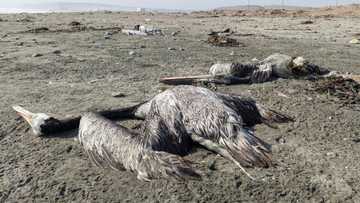
Read also
They are a nomadic and pastoralist community inhabiting large parts of northern, central, and southern Kenya.
People from this community live in temporary shelters calledmanyatta.
One of the unique traditions in this community is there are no formal funeral ceremonies.

Read also
When one dies, they are left in the fields for scavengers.
Today, some members of this community conduct burial ceremonies.
This community is monotheistic, and their supreme being is calledEnkai.

Tribal Ashanti chiefs look on during a visit of Britain’s Prince Charles at Manhyia palace in Kumasi, Ghana. Photo: @Ruth McDowall / AFPSource: Getty Images
The traditional Maasai diet comprises meat, blood, milk, fat, honey, and tree bark.
The community is one of the oldest African tribes known to man.
Hausa - Nigeria
There are over 20 millionHausa peoplein Nigeria.

Read also
Persons fromthis communityspeak the Hausa language, which is heavily infused with Arabic words due to Islamic influence.
A large percentage of Hausa people are Muslims, and a few worshipborioriskoki(nature spirits).
The main rites of passage in this community are birth, circumcision, marriage, and death.
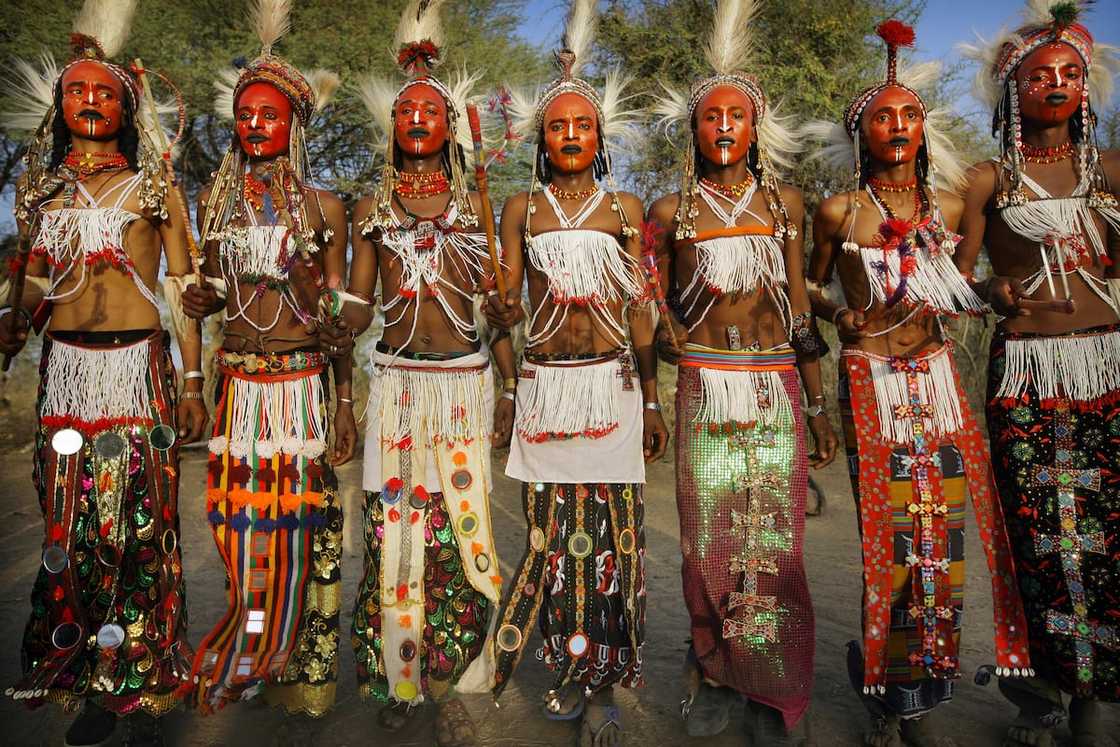
Young Fulani men dressed in elaborate ornamentation and made up in traditional face painting gather in lines to dance and sing, vying for the attention of young women. Photo: @Getty ImagesSource: Getty Images
In the rural set-up, people live in large households calledgidaje, and men are polygamous.
People also consume different meats and vegetables.
The traditional Hausa attire is elaborate.
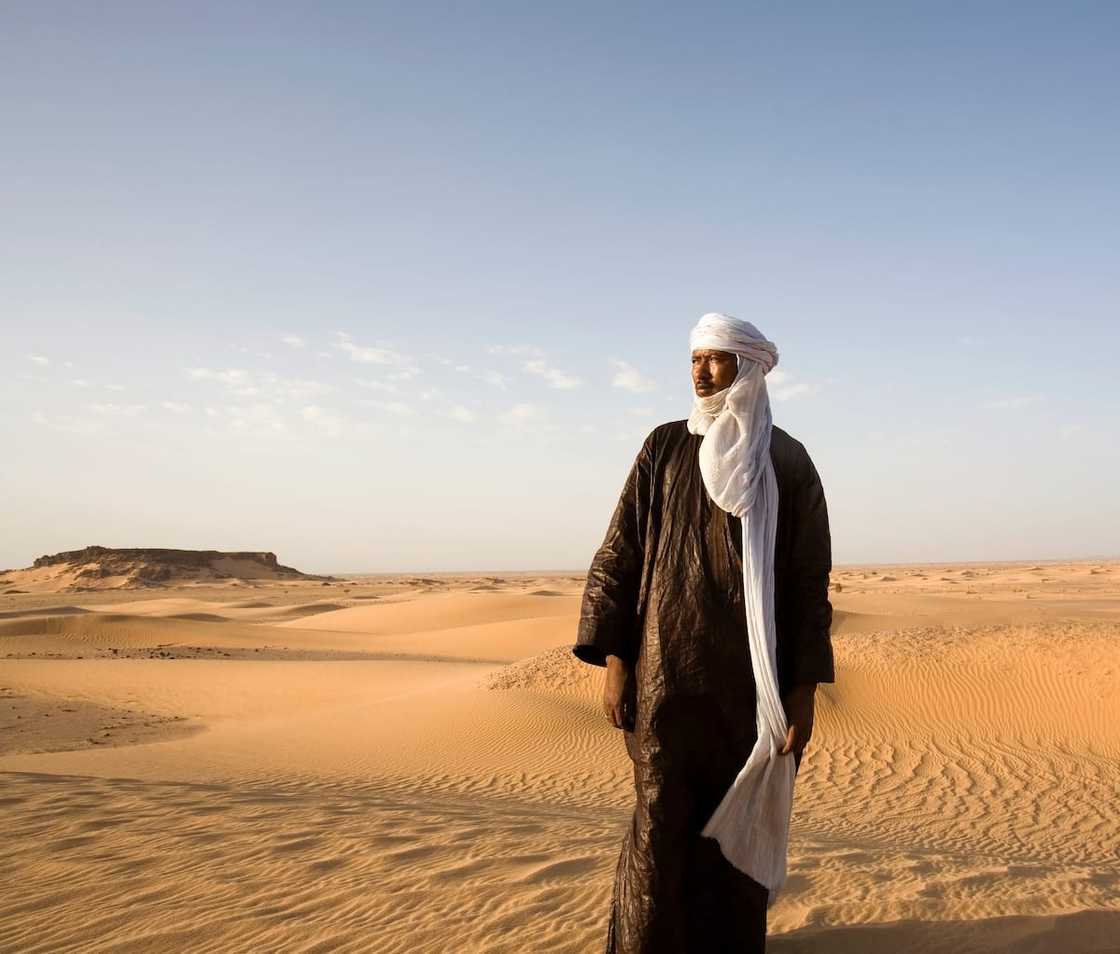
A Tuareg man standing in the South Sahara desert. Photo: @Getty ImagesSource: Getty Images
Swahili - Tanzania & Kenya
The Swahili are among the ancient African tribes you should know about.
They occupy the coastal areas of Kenya and Tanzania.
TheSwahili cultureis Swahili is inextricably connected to Islam.

Read also
There are no specific rites of passage for children or teens, but marriage marks the beginning of adulthood.
Modest behaviour is valued in this community, including greeting everyone you meet.
The Swahili society is patriarchal, and decisions made by the man of the house are final.
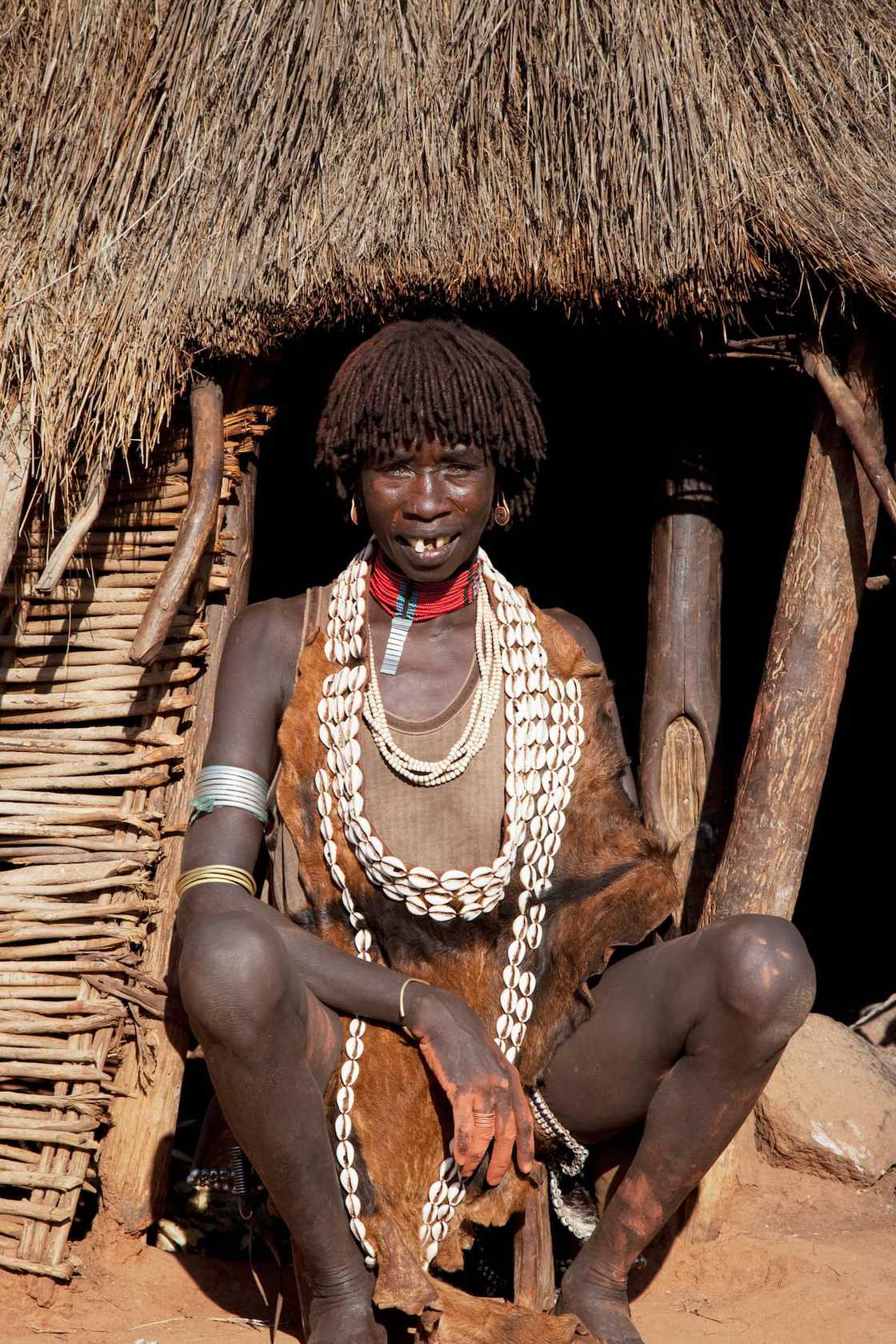
A Hamar woman sitting outside a hut. Photo: @Getty ImagesSource: Getty Images
Women wear brightly colored cotton cloths calledkangaorleso, while mean wear stripedkikois.
Losses deepen at crisis-hit SAS airline
6.
They are known for their unique metal and gold crafts, woodcarving, and brightly coloured woven clothes.

Read also
People fromthis communitybelieve that everything has a soul, including animals and plants.
They also believe in supernatural beings and other magical powers.
Birth, puberty, marriage, good harvests, and death are important in this culture.
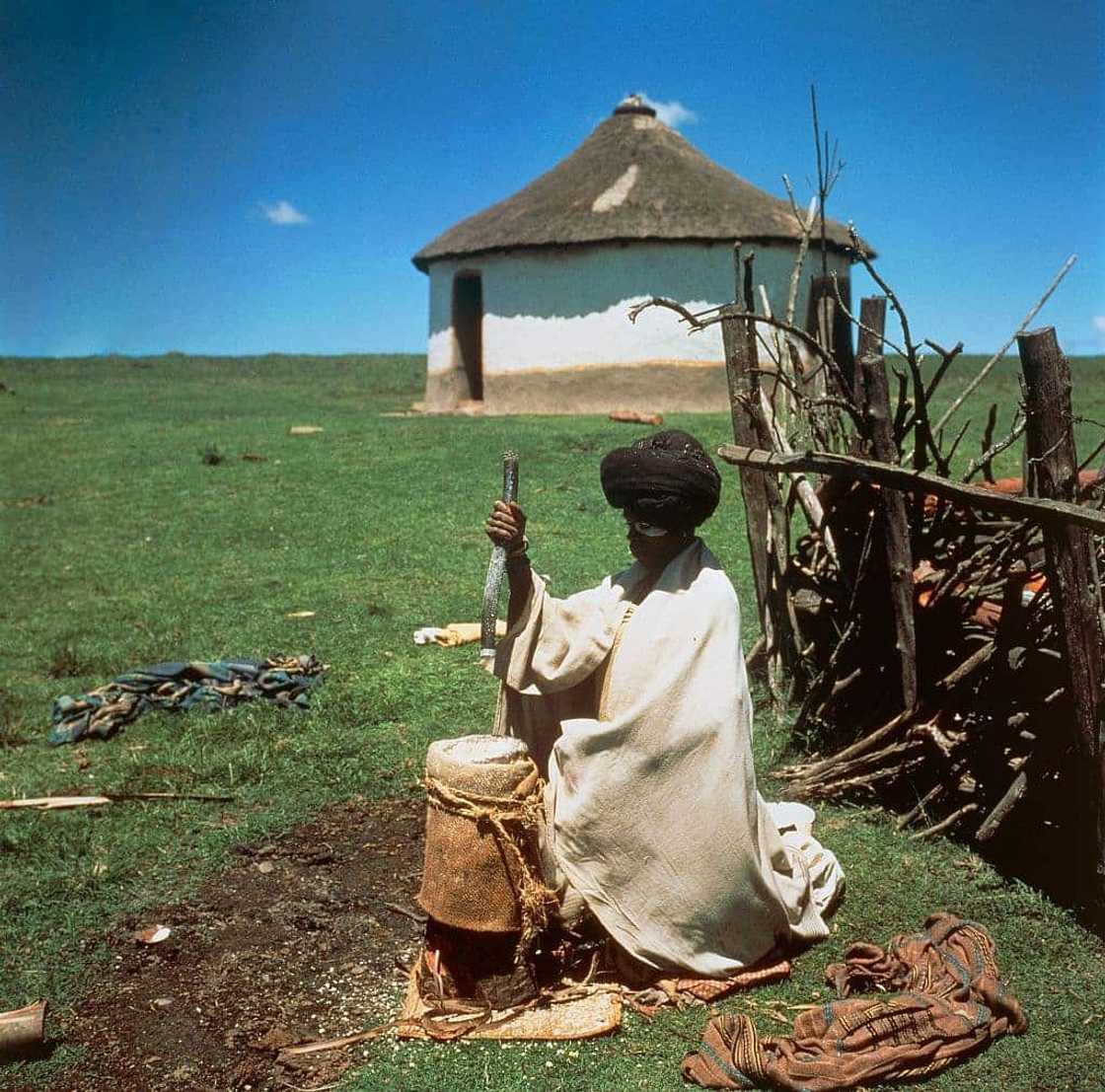
Xhosa woman preparing corn porridge, Coffee Bay, Transkei, Eastern Cape, South Africa. Photo: @DeAgostiniSource: Getty Images
The Ashanti traditionally had an abundance offoodcrops.
The Ashanti value their traditional clothing, especially the Kente, which is weaved by young men.
Kente is a precious and colourful piece of cloth.

Read also
Kings and chiefs wear it because it is associated with authority.
These people are also known as the Fulbe or Peuls.
It is believed that the first Fulani family emerged from a river.
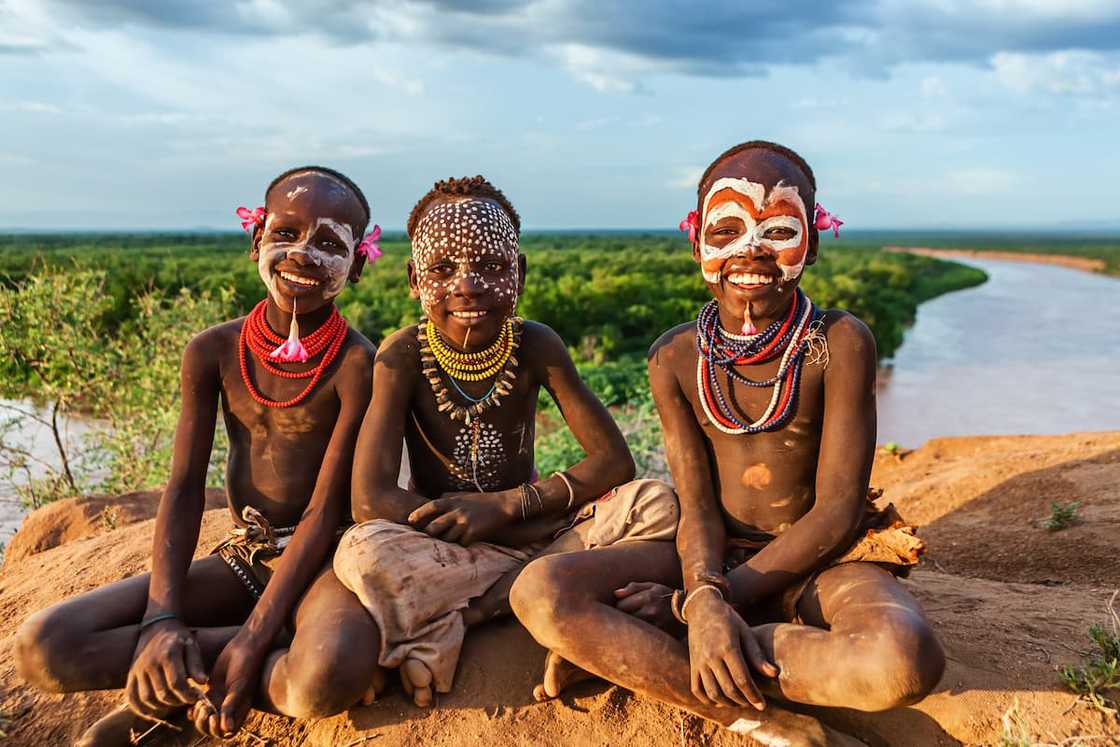
A group of happy toung boys from Karo tribe. Photo: @Getty ImagesSource: Getty Images
A significant section of the Fulani population is Muslim.
An elaborate naming ceremony is held after a child is born.
Its people are semi-nomadic and Islam.

Read also
Men from this community are famous because they veil their faces with a piece of cloth.
They also wear wrap-around skirts and embroidered blouses.
A week after a baby is born, a naming ceremony is held.

A traditional Himba woman covers her son with a fat and ochre mixture to protect him from sun in Kaokoland, Namibia. Photo: @Getty ImagesSource: Getty Images
Hamar/ Hamer - Ethiopia
The Hamar/Hamer tribelives in the Southern Omo Zone, near the Kenyan-Ethiopian border.
The climate in this area is pretty harsh and it affects human life span.
Did you know it is rare to find a person over 45 from this community?
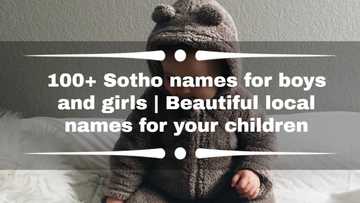
Read also
There are about 50,000 Hamer people.
If a young man fails to jump over four times, that is considered a bad sign.
He is not allowed to marry the girl.
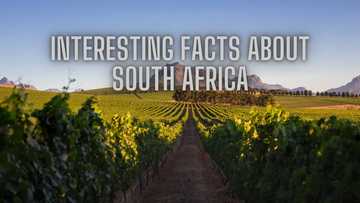
Read also
Instead, he is given another chance after one year.
Polygamy is allowed in this community, and a wealthy and strong man can have up to four wives.
Who is Konka Soweto owner?
Everything to know about the restaurant and club
Another unique custom is preoccupation with physical appearance.
They have unique hairstyles and use wooden pillows when sleeping to prevent the hair from touching the ground.
Land in this community is communal and is free for cultivation and grazing.
Labour is divided in terms of sex and age.
Xhosa - South Africa
TheXhosa peoplecomprise the second-largest tribe in South Africa.
They are predominantly found in the south and eastern sides of the country.
Thetribe’s languageis known as isiXhosa.
Like isiZulu, it is characterised by unique click sounds.
The traditional Xhosa family is primarily patriarchal, and women and children must submit to the man’s authority.
Polygamy was practised in the past, but the situation is gradually changing.
The staple Xhosa food is corn.
Different types of meat and fermented milk are also commonly consumed.
Jewellery in African tribes is valued, and the Xhosa ethnic group is no exception.
Beadwork had cultural significance in the past but is now used as a fashion statement.
People from this community differentiate themselves from the neighbouring tribes by their body and face painting.
They draw and paint varying designs that cover the torso and legs.
They also wear large beads around their necks.
Men cover their bodies and faces with ashes mixed with fat to symbolise virility.
The community has elaborate festivals and rituals that have been maintained for centuries.
While some people may think they are primitive African rituals ceremonies, the Karo are proud of them.
Karo people are found along the east banks of the Omo River in southern Ethiopia.
Agriculture is their primary economic activity.
The paste is used to cleanse the skin and protect people from the extremely hot and dry climate.
Ovahimba people keep livestock.
They breed fat-tailed sheep and goats.
They also farm rain-fed crops e.g., maize and millet.
An unusual tradition in this community is that women and girls perform more labour-intensive work than men and boys.
The Himba believe in a supreme being calledMukuru, and they communicate withMukuruthrough holy fire.
Another unusual tradition is that women from this community are not allowed to use water for cleaning.
Instead, they take daily smoke baths to maintain personal hygiene.
Men are polygamous, and early marriages are arranged.
Did you know this community is famous because members offerfree sexto guests and travellers?
Africa ishome toabout 3,000 tribes.
It is the most culturally diverse continent.
What is the most famous tribe in Africa?
Zuluis arguably themost popular tribein Africa.
It is also one of the largest ethnic groups in South Africa.
There are numerous African tribes, each with rich traditions and rituals.
The most popular ethnic groups on the continent have special customs that set them apart from the rest.
South Africa is one of the richest countries in the world in terms of cultural and natural resource diversity.
In recent years, South Africa has become favourite destination for travellers from different parts of the world.
You should learn a few key things before visiting this country.
She has a BSc.
She loves traveling and checking out new restaurants.
She holds a Diploma in Mass Communication and a Bachelors degree in Nutrition and Dietetics from Kenyatta University.
Cyprine joined Briefly.co.za in mid-2021, covering multiple topics, including finance, entertainment, sports, and lifestyle.
In 2023, she finished the AFP course on Digital Investigation Techniques.
She received the Writer of the Year awards in 2023 and 2024.
In 2024, she completed the Google News Initiative course.
Email: cyprineapindi@gmail.com